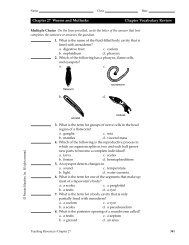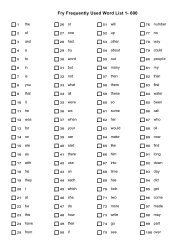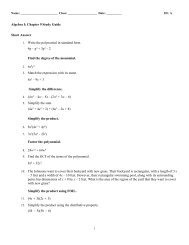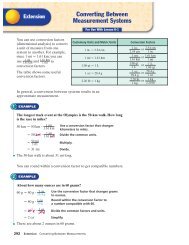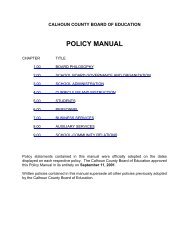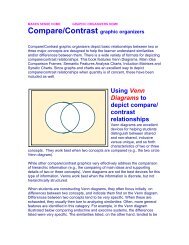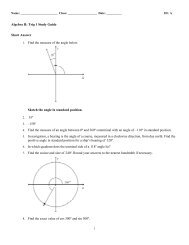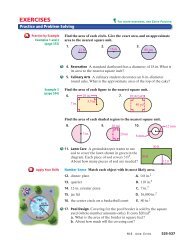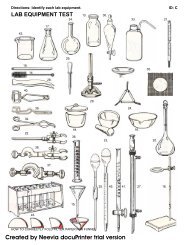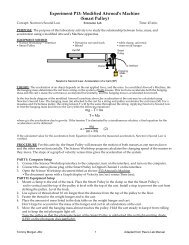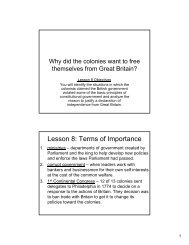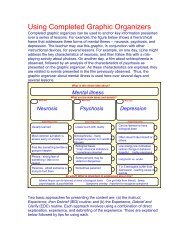Numbered-Heads-Together
Numbered-Heads-Together
Numbered-Heads-Together
Create successful ePaper yourself
Turn your PDF publications into a flip-book with our unique Google optimized e-Paper software.
<strong>Numbered</strong>-<strong>Heads</strong>-<strong>Together</strong><br />
Adapted from...<br />
Kagan, S. (1992). Cooperative learning. San Juan Capistrano, CA: Resources for Teachers, Inc.<br />
<strong>Numbered</strong>-heads-together<br />
Original groups<br />
Group A Group B Group C Group D<br />
Sam<br />
1<br />
Jenny<br />
1<br />
Tish<br />
1<br />
Carol<br />
1<br />
Bill<br />
2<br />
David<br />
2<br />
Barn<br />
2<br />
Ted<br />
2<br />
Gary<br />
3<br />
Josh<br />
3<br />
Kana<br />
3<br />
Barb<br />
3<br />
Mary<br />
4<br />
Fran<br />
4<br />
Salley<br />
4<br />
Aman<br />
4<br />
Rearranged groups<br />
Group 1<br />
Sam<br />
1<br />
Jenny<br />
1<br />
Tish<br />
1<br />
Carol<br />
1<br />
Group 2<br />
Bill<br />
2<br />
David<br />
2<br />
Barn<br />
2<br />
Ted<br />
2<br />
Group 3<br />
Gary<br />
3<br />
Josh<br />
3<br />
Kana<br />
3<br />
Barb<br />
3<br />
Group 3<br />
Mary<br />
4<br />
Fran<br />
4<br />
Salley<br />
4<br />
Aman<br />
4<br />
<strong>Numbered</strong>-<strong>Heads</strong>-<strong>Together</strong> is a fun way to practice constructing graphic<br />
organizers as well as learning the content depicted on them. Basically, the<br />
procedure involves having each group construct graphics depicting key<br />
information and then having individual members of that group teach the<br />
information on their graphic to representatives from other groups.<br />
Teaching Tips<br />
Step 1: Divide the class into teams of about four members each; have each<br />
team construct a graphic organizer depicting essential to-be-learned<br />
information about the unit.<br />
Step 2: Using the numbers 1, 2, 3, and 4, assign each member of the<br />
group a number; ask students to remember their individually<br />
assigned numbers.<br />
Step 3: Rearrange team compositions for the whole class so that all the<br />
students from the original teams who were assigned the<br />
number "1" are now in the same group, all the students from the
original teams who were assigned the number "2" are now grouped<br />
together, and so forth.<br />
Step 4: Ask each student to share with the<br />
members of his/her new group the<br />
information depicted on the his/her<br />
original group’s graphic.<br />
Thus, if there are four members in<br />
a group, and each teaches the<br />
information from the graphic<br />
organizer developed in his/her<br />
original group, four different<br />
graphic organizers will be<br />
presented in the new group.<br />
Note: If the rearranged<br />
groups become too<br />
large, you can<br />
subdivide them. For<br />
example, if Group A has<br />
eight members, you<br />
can split it and<br />
have two smaller<br />
A groups.<br />
INSTRUCTIONAL ROUTINES MENU



